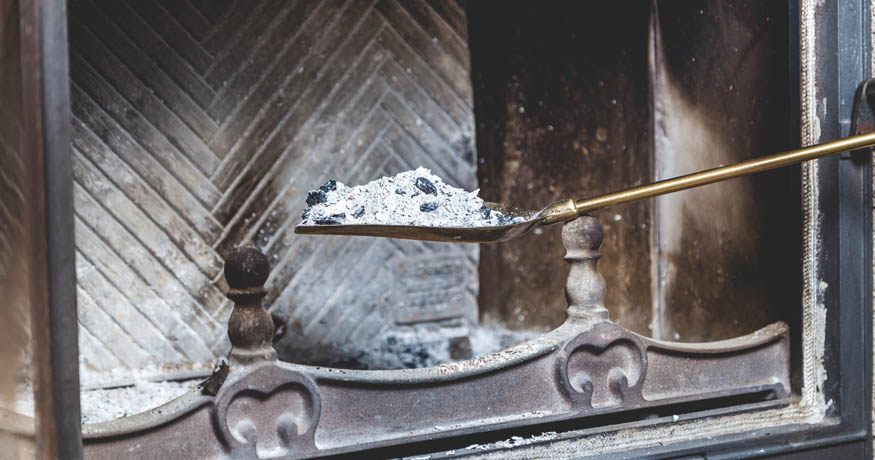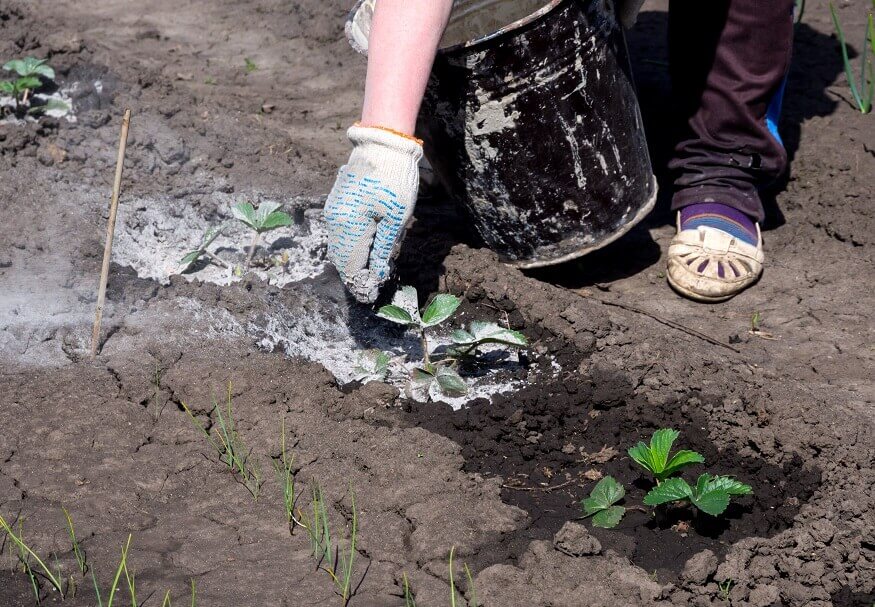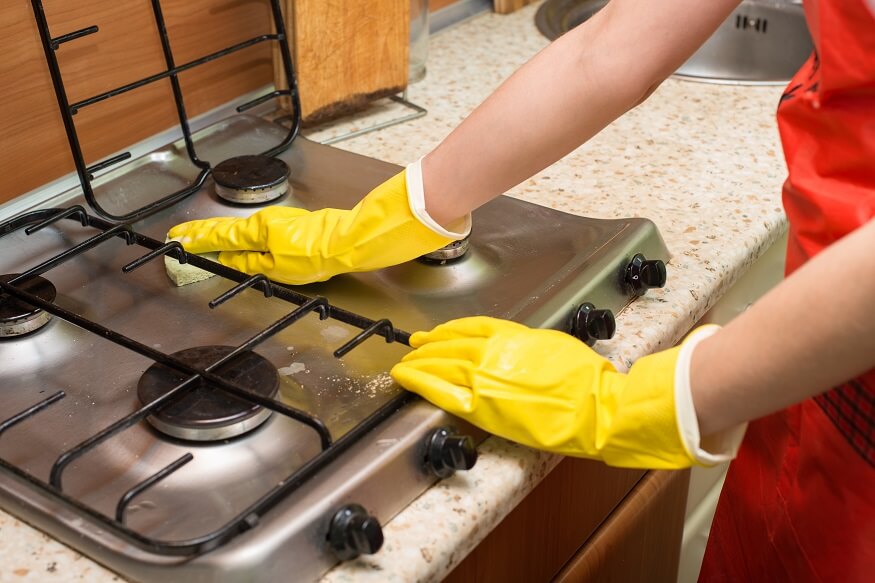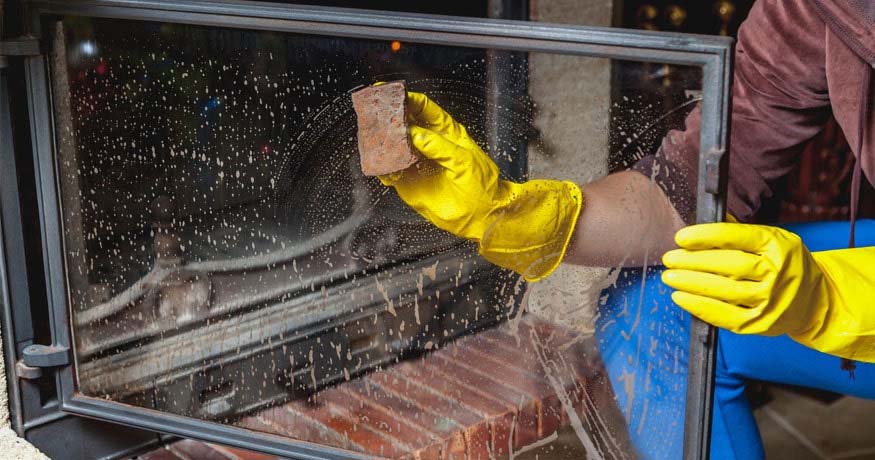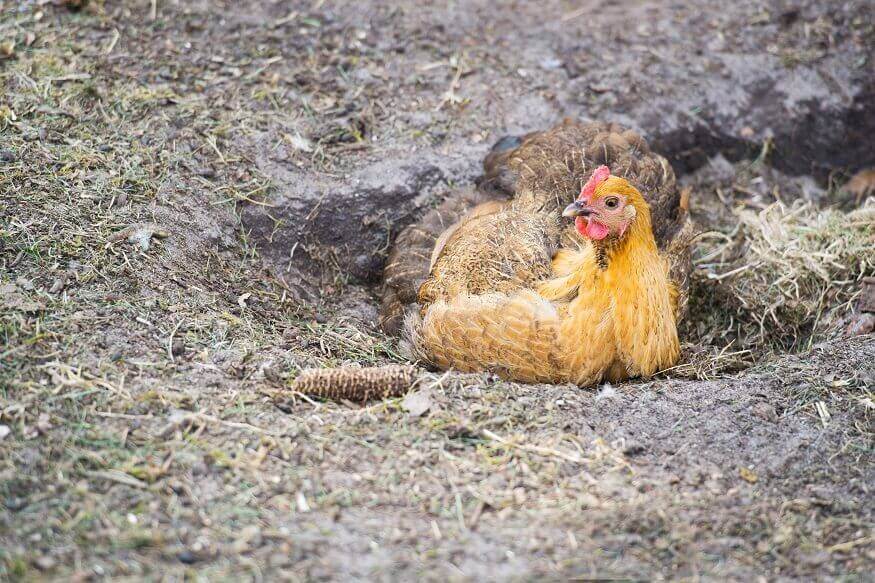Discovering practical and eco-friendly uses for wood ash at home and in the garden is a common quest for those looking to reduce waste and enhance sustainability.
Accumulating ash, especially after a long winter, poses a unique challenge: it’s too valuable to discard yet not always clear how best to utilize it. With a background in sustainable living and a knack for repurposing household byproducts, I’ve explored numerous ways to turn wood ash into a valuable resource.
This guide will educate you on the versatile applications of wood ash, from enriching your garden soil to natural pest control and household cleaning.
Embracing these methods not only aligns with eco-friendly practices but also introduces cost-effective solutions to common problems. Like you, I’m on a journey to make my living space more sustainable, and I’m eager to share these insights, fostering a connection over shared environmental values and practical homemaking.
The table below gives a quick summary, read on for more info on each method.
| Area of Use | Application of Wood Ash |
| Garden and Yard | Fertilizer (rich in phosphorus, potassium, and calcium) Soil amendment for balancing pH Compost additive for balancing acidity and deterring pests Frost protection for plants Pond health improvement Slug and pest repellent |
| Around the House | Ant and insect repellent Ice melt and traction on sidewalks Glass cleaner for windows, mirrors, and car headlights Stove and fireplace glass cleaner Silver polish Cleaning and hiding driveway stainsPutting out fires Homemade soap Deodorizer Natural desiccant |
| Pets, Livestock, and Poultry | Dust bath for poultry (parasite treatment) Supplement for chickens and livestock (mineral intake) Skunk odor remover Flea repellent Treating wounds |
Safety Notes
Before you start gathering your wood ash to use around the home, there are a few safety precautions to keep in mind.
- Don’t remove ash until it has cooled. This should go without saying, but never remove ash while your fireplace or wood burner is still warm. Allow it to cool fully before opening the ash catch. It can take two full days for ash to fully cool, so the best approach is to empty the ash right before starting your next fire, assuming plenty of time has passed.
- Be mindful of dust. Collecting wood ash can create a lot of fine dust in the air. Moving slowly will lessen this effect. But if you have any respiratory conditions, it is a good idea to wear a dust mask during the process,
- Store in a metal container. Even though your ash should be completely cool when you collect it, it is still a good idea to store it in a heat-proof container just in case. A metal bucket, ashcan, or metal trash can are your best options. Make sure you have a tight-fitting metal lid to keep down dust and keep water out.
Continue to gather your ash throughout the burning season so you will have a plentiful supply for the year.
Uses for Wood Ash in the Garden
Wood ash is most famous for its many uses in the garden. It can do everything from repelling pests to helping your plants grow faster and larger.
Here are five of the best uses for wood ash in the garden and yard.
Fertilizer
While wood ash does not contain any of the carbon or nitrogen that is found in raw wood, it does contain many of the other nutrients that plants need.
Ash is especially high in phosphorus and potassium. It also contains calcium, an important nutrient to prevent blossom end rot in tomatoes.
Wood ash can be mixed with fertilizer tea to add extra nutrients. Or, it can be added directly to the hole before planting nightshades to prevent black spots from forming on the fruit.
If you live in an area that has particularly acidic soil, wood ash is one of the easiest ways to add balance.
Ash has a pH of 8 to 12, making it a perfect alkalizing agent for acidic dirt. Just avoid using it on potatoes, blueberries, azaleas, and other acid-loving plants.
Compost Additive
Wood ash is also a great material to add to your compost.
Because rotting food and plants are naturally acidic, adding a little ash can help balance it. This can be helpful even if your ground soil is more alkaline.
Add a sprinkle of ash between layers of green and brown as you build your pile. Be careful not to add too much or you may dry out the pile or disrupt the chemical balance.
Using ash as the top layer of your compost can also be helpful in keeping scavengers like raccoons, skunks, and even bears away.
Frost Protection
Wood ash is full of mineral salts that can actually help lower the freezing temperature of the water inside leaves.
You can use this odd characteristic to your advantage by sprinkling your less-hearty plants with ash when a light frost is predicted.
This is a far easier way to save your veggies from an unexpected cold-snap than covering your entire garden with bedsheets or plastic.
Of course, this method is only effective for slight temperature drops, not freezes. But it is a great trick to keep up your sleeve for both late spring and early fall frosts.
Pond Health
The same characteristics that make wood ash effective as a terrestrial fertilizer also make it perfect for pond plants.
The high potassium levels help keep aquatic foliage healthy allowing them to better compete with algae. This, in turn, reduces algae growth.
Ash also contains bits of charcoal, an important material for water filtration.
Charcoal binds impurities on its surface. This not only cleanses toxins from the pond to allow plants to thrive, but it also helps clarify the water itself.
Slug and Pest Repellent
Ash is a natural desiccant, meaning it actively pulls moisture from the environment. This is one reason it is so effective in repelling garden insects.
When sprinkled in a ring around greens, strawberries, and other plants slugs love to munch on, it can stop these slimy creatures in their tracks. The salty, hydrophilic nature of ash quickly pulls moisture from slugs and snails forcing them to avoid it.
This same water-drawing effect can even deter hard-bodied insects.
Because ash is abrasive, it poses a threat to the outer shell of beetles, ants, and other garden pests. If their shell is pierced by a sharp piece of ash, they can quickly lose moisture and die.
By sprinkling ash on greens and other fragile plants, you can keep flea beetles and aphids at bay.
Keep in mind, once the ash gets wet, it will no longer work. But if you are fastidious about your application, this can be a very effective pest repellent method.
Uses for Wood Ash Around the House
Many of the same properties that make wood ash useful in the garden also make this a valuable material to use indoors.
Here are ten ways to utilize wood ash in the home.
Ant and Insect Repellent
Just as ash is perfect for keeping pesky bugs away from your veggies, it is also great for keeping bugs out of your home.
By sprinkling a line of ash in front of doors, on window sills, and other known entry points, you can easily deter ants from entering your home.
If you have a particularly pesky colony near your foundation, you can even convince them to relocate by continuously pouring ash on the top of their anthill.
This method also works wonders for larger pests like cockroaches.
By sprinkling ash in the corners of your cupboards and kitchen, you can keep these creepy bugs out of your food. Just make sure to replace the piles every few days or more often if you live in a humid environment.
Ice Melt
Because of its high salt content, ash makes a great natural alternative to magnesium chloride and other sidewalk salts.
By dusting your sidewalk after a snowstorm, you can quickly melt the ice while simultaneously providing traction to prevent falls.
Like commercial salt products, you are likely to track this ash into your house if you use it near your entryway. But you can avoid staining your carpets by making sure to remove your shoes at the door and sweeping the ash away as soon as the ice has melted.
Glass Cleaner
Lye, a caustic chemical that is created by leaching wood ash, is a popular and effective cleaner. But it is too erosive for most typical cleaning chores.
Raw wood ash provides much of the same cleaning power as concentrated lye, but without the damaging effects.
Fine ash can be dissolved in water and used as a spray cleaner for windows, mirrors, and even car headlights. It is especially effective for removing greasy residue like fingerprints and stuck-on food.
Stove and Fireplace Glass Cleaner
The combination of raw lye and an abrasive texture make ash the perfect cleaner for oven and fireplace glass and glass-topped stoves.
Use a wet cloth or newspaper and dab it in ash. Then scrub the glass surface in a circular motion until all of the grease and staining is removed.
The rough texture of ash is enough to cut through tough residue without scratching the glass.
Silver Polish
These same characteristics make ash perfect for cleaning up tarnished silver.
For this kind of project, you’ll want to make a paste from ash and water. Dab your soft cloth into the paste and begin scrubbing the silver in a circular pattern.
Once you have gone over the entire surface, take a dry cloth and go over the piece again. This will help pick up all the leftover ash and displaced grime and polish the piece back to its original brilliance.
Cleaning and Hiding Driveway Stains
Silver-grey ash is the perfect color for disguising annoying stains on cement sidewalks and driveways.
Simply dust the spot with ash and use your shoe to grind it into the coarse surface.
Some stains, like oil and grease, can even be completely removed using ash.
Like cat litter, ash is very absorbent. Pile ash on fresh oil stains and leave it to sit for a day or two. Then use a dustpan to sweep up the ash and the soaked-up grease along with it.
Putting Out a Fire
It may seem odd to pile more ash on top of a fire that has already created plenty itself, but this method for putting out a fire does work quite well in a pinch.
Ideally, if you want the fire in your fireplace or wood burner to go out, you would suffocate it by closing the doors and vents, or simply wait for it to die down.
But if you are in a hurry, you have fewer options. It’s not as if you can pour water into your fireplace (unless you want to make a huge mess).
Piling ash onto the logs will quickly douse the flames without creating too much of a mess. And the only drawback is you will have more ash than normal to clean when you prepare the next fire.
Homemade Soap
For millennia, humans have been making soap by combining lye and fat. And since ash is full of lye, it makes sense that you can create homemade soap using it.
Mother Earth News has a great article on leaching lye and creating your own bar soap–you can find it here.
Even if you are feeling less than crafty, you can take advantage of the natural soapiness of ash.
Next time you are camping, try adding a dash of ash to your bacon or steak pan before doing the dishes. The combination of lye in the ash and the fat residue left from the meat will create a crude soap that can be used to clean up after the entire meal.
Deodorizer
Wood ash and baking soda have many traits in common. In fact, before baking soda was first produced in the late 1700s, ash was often used as a leavening agent in food, an alkali cleaner, and a powerful deodorizer.
If you are short on baking soda and have a smelly fridge, you can place a cup of ash on the fridge shelf. Ash that is high in charcoal will have the same deodorizing effects as a box of baking soda.
You can also sprinkle ash in stinky shoes and on sweat-soaked athletic equipment and set it in the sun to remove odors. But be aware, ash may stain white material.
Desiccant
Because ash naturally pulls humidity from the air, it can make an effective natural desiccant.
By placing a cup of ash in your cellar, basement, or in humid cupboards, you can avoid problems with mold growth and musty odors. As with deodorizing, having chunks of charcoal in the mix helps with the dehumidifying process.
Just be sure to change the ash out frequently to achieve a prolonged effect.
Wood Ash Use for Pets, Livestock, and Poultry
The uses for wood ash aren’t limited to just the home and garden. This handy material can also be quite beneficial for pets and livestock.
Here are five uses for wood ash for pets, backyard chickens, and around the ranch.
Dust Bath for Poultry
If you have chickens, then you already know how much these birds love to flap around in the dust. Providing them with a shallow bucket or kiddy pool full of ash provides an outlet for this behavior with some added benefits.
Ash is a natural treatment for many external parasites, including avian mites. By allowing your flock to romp around in ash dust, you can avoid using chemical treatments and medications for this and similar skin issues.
Just be sure to replace the ash whenever it gets wet, as this medium does tend to hold water longer than traditional sand.
Supplement for Chickens and Livestock
In addition to helping keep chickens clean on the outside, ash can also be beneficial for poultry and livestock when consumed.
All of those great minerals that benefit plants when ash is used as fertilizer can also benefit animals.
Adding a dash of wood ash to poultry feed (at a ratio of about 1:100) can up your birds’ calcium and phosphorous consumption without expensive supplements.
Ash can also be a beneficial additive to livestock feed when used in the proper amounts.
Skunk Odor Remover
If you live in a rural area (or the right kind of urban area) you’ve likely had to deal with a dog or two getting skunked.
It is a noxious odor that is especially hard to remove. Here, once again, ash comes to the rescue.
By dusting your skunked pet in a hefty layer of ash, you can take advantage of those same great deodorizing properties that make ash a good baking soda replacement in the home.
Let your stinky four-legged friend bask outside in the dusty dry-bath for a few hours. Then bathe them as you normally would after a skunky encounter. The ash will help neutralize the odor much more effectively than the bath alone.
Flea Repellent
Just as ash can help fight avian lice in chickens, it can also repel and reduce flea infestations on your furry friends.
The dehydrating, salty qualities of ash affect fleas the same way they do slugs and beetles in the garden.
To fight active infections, dust your pet thoroughly and leave the dust on as long as possible (up to 24 hours). Then give them an extra-soapy bath to remove the ash and drown the remaining pests. If you live in a flea-infested area, you may have to repeat this process every week or so to prevent future infections.
Treating Wounds
In ancient times, ash was often used as a treatment for open wounds.
While not often used today, wood ash is effective for cleaning and disinfecting wounds and treating many skin conditions. One study found that both wood and charcoal ash are more effective in healing wounds in rabbit models than topical Polymyxin B-Bacitracin Zinc ointment.
Obviously, getting your pet (or yourself) to the clinic for proper treatment of open wounds is preferred. But this trick is great to keep in mind for emergencies.
The Wrap Up
Have we convinced you to start hoarding your wood ash yet?
With so many uses in the home and garden, and in helping keep your pets healthy, there really is no reason to ever throw out this dusty gray gold.
Chances are, you’ll be glad you kept it around next time you find yourself short on baking soda, cleaning supplies, insect repellent, and even antibacterial ointment!
